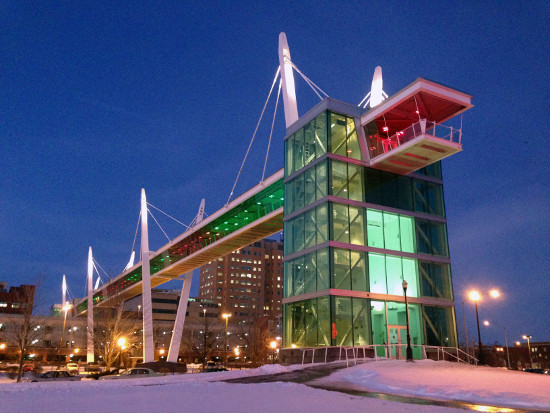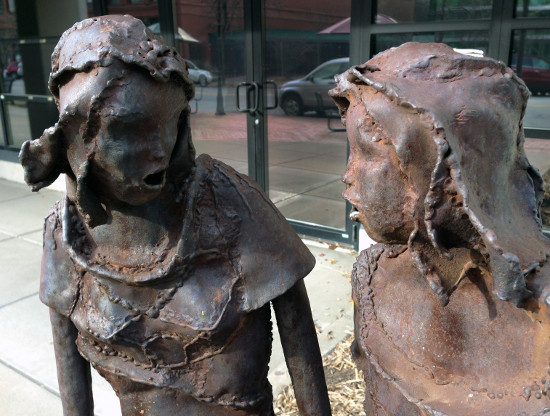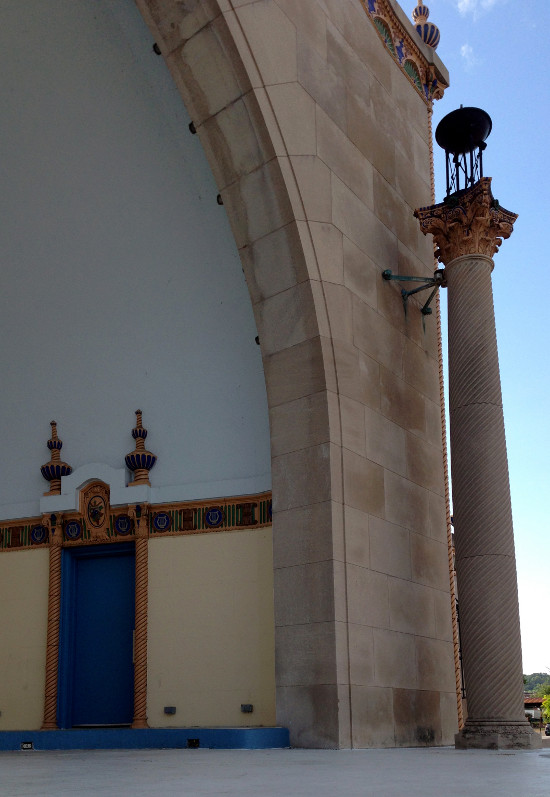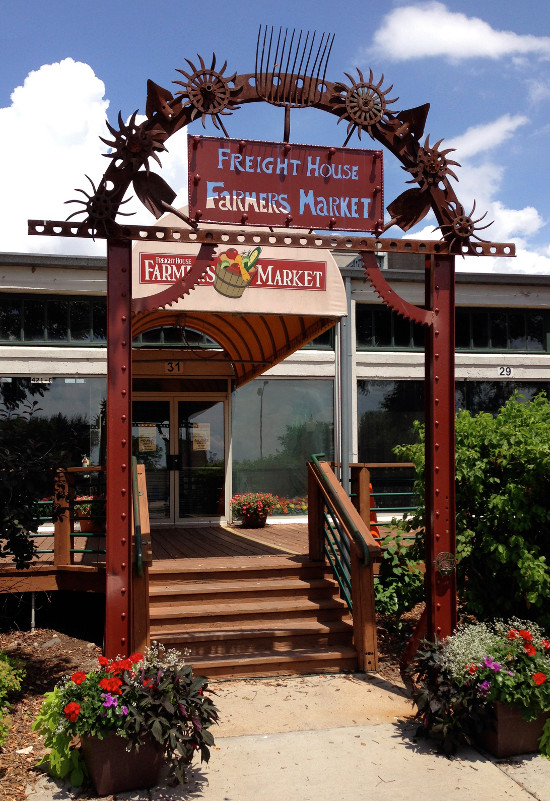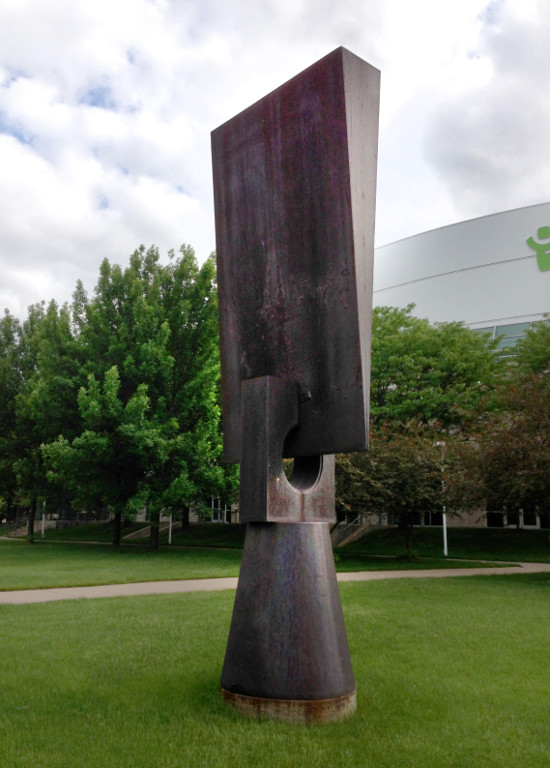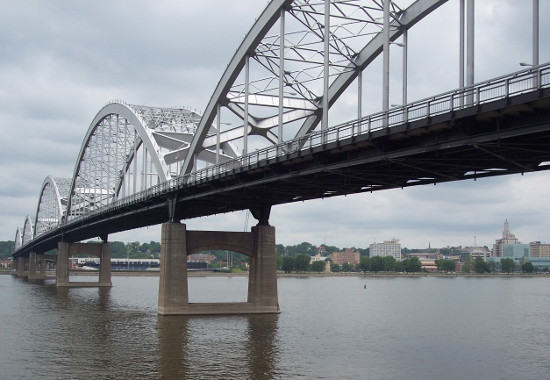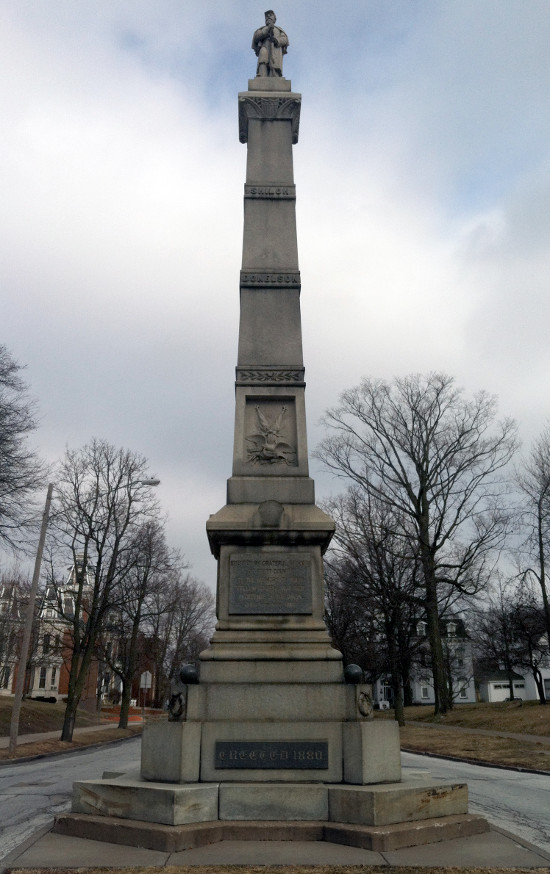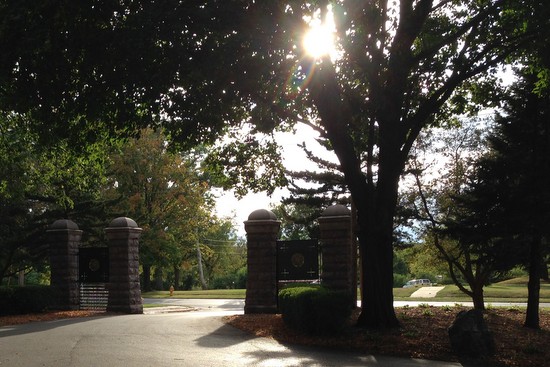
To enter Oakdale Memorial Gardens, at 2501 Eastern Avenue in Davenport, one passes through twin stone pillars that stand 12 feet tall. The Art Nouveau side gates, made of patterned iron bars and a metal plate with an oak-leaf design at its center, are both beautiful and imposing, solemnly announcing the dignified purpose of the site within. Passing between the center pillars, we feel we're leaving the commonplace behind.
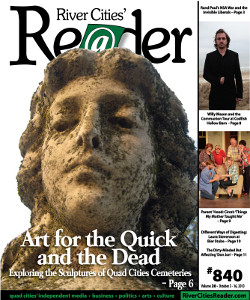 Through this passage - constructed circa 1897 - is a refuge from the fast-paced world. Arranged on the park-like expanse of lawn that stretches over acres of gently rolling hills, with massive oak trees and flowering gardens, are thousands of graves - and also many sculptures .
Through this passage - constructed circa 1897 - is a refuge from the fast-paced world. Arranged on the park-like expanse of lawn that stretches over acres of gently rolling hills, with massive oak trees and flowering gardens, are thousands of graves - and also many sculptures .
Oakdale, Chippiannock Cemetery in Rock Island, Riverside Cemetery in Moline, and the Mount Calvary and Pine Hill cemeteries in Davenport were the first garden cemeteries in the Quad Cities. Established in the 1850s, they also served as the first public parks in the area, providing a place for the general public to enjoy magnificent sculptures and garden settings previously available only to the wealthy.
(Our botanical parks weren't developed until some three decades later, such as Vander Veer Botanical Park in Davenport in 1885; it was among the first botanical gardens west of the Mississippi.)
The cemetery sculptures in this article were selected, in part, because of the artists' skill but - more importantly - for the artworks' capacity to communicate concepts and emotions. These works are examples of what funerary art can accomplish within a clearly circumscribed purpose - to help the living celebrate, remember, and mourn the dead.
For the most part, these sculptures are not creative, personal expressions of the artist. Yet they are not uniform in the feelings they convey. Some are comforting; others are stark reminders that life is brief. Some are massive and exotic, others humble and typical but no less evocative.
